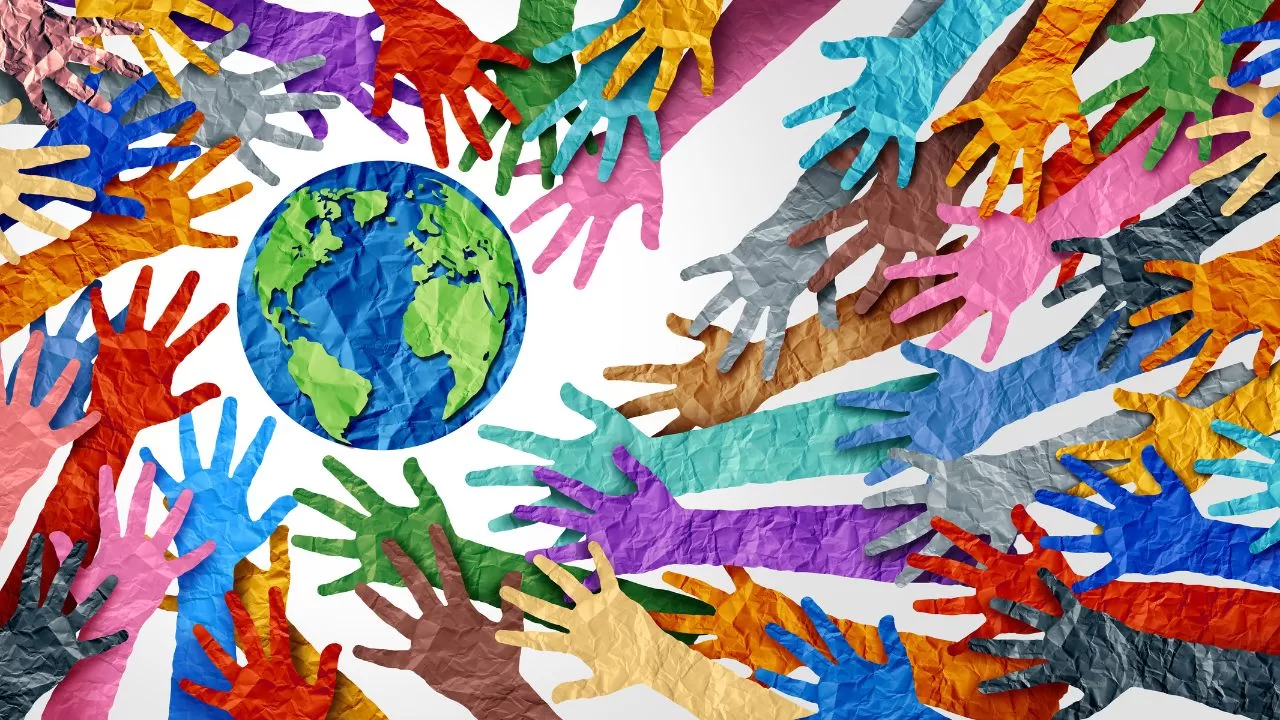In a vibrant, bustling marketplace somewhere between the intersections of continents, Amina, a young traveler with an insatiable thirst for knowledge, found herself surrounded by the symphony of languages, colors, and traditions. As she moved from one stall to another, tasting unfamiliar foods and listening to intriguing stories, a myriad of questions about cultural diversity blossomed in her mind.
- What is cultural diversity?
Lost in thought, Amina began to contemplate this foundational query. Cultural diversity, she surmised, is the mosaic of different cultures, languages, religions, traditions, and histories that make up our world. It’s not just about recognizing differences but also about celebrating them. It’s the unique melodies of different languages, the spectrum of festivals celebrated worldwide, and the myriad of stories that are passed down from one generation to the next. - Why is cultural diversity important?
While savoring a mouthful of spicy samosa from a nearby vendor, it struck her that much like the variety of foods enriching her palate, cultural diversity enriches societies. It fosters mutual understanding, breaks down prejudice, and promotes peace. It encourages critical thinking, creativity, and innovation by allowing different perspectives to collide and collaborate. - How does cultural diversity impact businesses and the workplace?
From a neighboring carpet stall, a merchant shared tales of how the weaving techniques had amalgamated styles from various cultures. This fusion created rugs that were in high demand globally. It was evident to Amina that diverse workplaces could draw on a richer array of experiences, perspectives, and skills, leading to increased creativity, broader understanding of global markets, and better problem-solving. - Does cultural diversity challenge societal harmony?
Though cultures may differ, at their core, many values are shared, like love, respect, and solidarity. While it’s true that misunderstandings or ignorance can lead to conflict, the fault isn’t with diversity itself but with the lack of understanding and communication. It’s essential to promote dialogue and education about different cultures to create cohesive societies. - How can we promote cultural diversity?
One way, Amina thought, is through education. Schools and institutions could incorporate diverse cultural histories, traditions, and perspectives into curricula. Moreover, media can play a vital role in portraying various cultures positively and accurately. Celebrating international days, hosting cultural festivals, and encouraging diverse art forms can also be instrumental. - How does globalization affect cultural diversity?
While chatting with traders from distant lands, Amina realized globalization was a double-edged sword. On one hand, it fosters intercultural communication and cooperation. But on the other, there’s the risk of cultural homogenization, where dominant cultures overshadow or dilute others. The key is to find a balance, ensuring interconnectedness doesn’t compromise cultural identity. - Is cultural diversity the same as ethnic diversity?
As Amina observed the varied faces around her, she concluded that while they’re related, they’re not identical. Ethnic diversity focuses on shared characteristics like language, heritage, and physical attributes, whereas cultural diversity encompasses broader societal elements, including customs, practices, and beliefs. - What challenges does cultural diversity present in education?
Teachers from diverse backgrounds shared their experiences with Amina. While diverse classrooms enrich the learning environment, they also pose challenges. These can include language barriers or varying educational backgrounds and learning styles. Educators must adapt and be equipped to cater to these varied needs, ensuring inclusivity. - Can cultural diversity influence a country’s politics and policies?
Certainly! Amina learned from a local historian that diverse societies often see a variety of perspectives influencing public discourse, policies, and political priorities. Acknowledging and respecting this diversity often leads to more inclusive governance. - How can individuals benefit from cultural diversity?
As the sun dipped below the horizon, Amina reflected on her enriching day. Embracing cultural diversity had expanded her worldview, built resilience, increased her adaptability, and deepened her empathy and understanding.
As night embraced the marketplace, the tapestry of stories, sounds, and sights around Amina was a living testament to the beauty of cultural diversity. The questions that had sprung to her mind and their answers had not only enriched her understanding but also fueled her passion to advocate for a world where differences were celebrated, not just tolerated.












0 Comments